Are you wondering where to visit in Japan next? Hokkaido is the country’s northernmost island and often gets overlooked – we want to change that. By the time you finish reading this ultimate guide for visiting Hokkaido, you’ll be desperate to book your flights!
This article may contain paid links where we make a small commission for purchases you make from links that you click from this article. By purchasing through our links, you support us at no additional cost. Thank you for your support ❤️. For more details, read the disclosure page.
Winter is especially magical on the island, and the enormous snow sculptures at the Sapporo Snow Festival are a sight to behold. The island’s powdery snow and perfect ski mountains are impossible to resist even for beginner snow sports. Outside of winter, head to Hokkaido’s epic Sakura spots or visit the colorful Furano Flower Fields.
Read on to find out all the details for visiting this amazing island!
What You’ll Get Out Of This Article
- Helpful insight on the most popular places to visit in Hokkaido to help you plan your trip to this region of Japan.
- Everything you need to know about the Sakura season in Hokkaido. The region’s late blooms don’t start until late May, so don’t panic if you’ve missed the cherry blossom season on Japan’s other islands.
- Our insider tips about going on a skiing or snowboarding trip to Kokusai Ski Resort. You can’t miss Japan’s famously powdery snow, which is so awesome it has its own name – JAPOW!
- An awesome guide to the top places to stay, suited to all kinds of budgets.
- Our favorite tours, which you should book ahead of time before other travelers beat you to it!
- Our top tips and guide on things to avoid doing while you’re in Hokkaido, so you don’t miss out on anything or make any common travel mistakes!
- A handy packing list with everything you’ll need to bring along with you on this epic winter escape in Hokkaido.
Everything You Need To Know Before You Visit Hokkaido
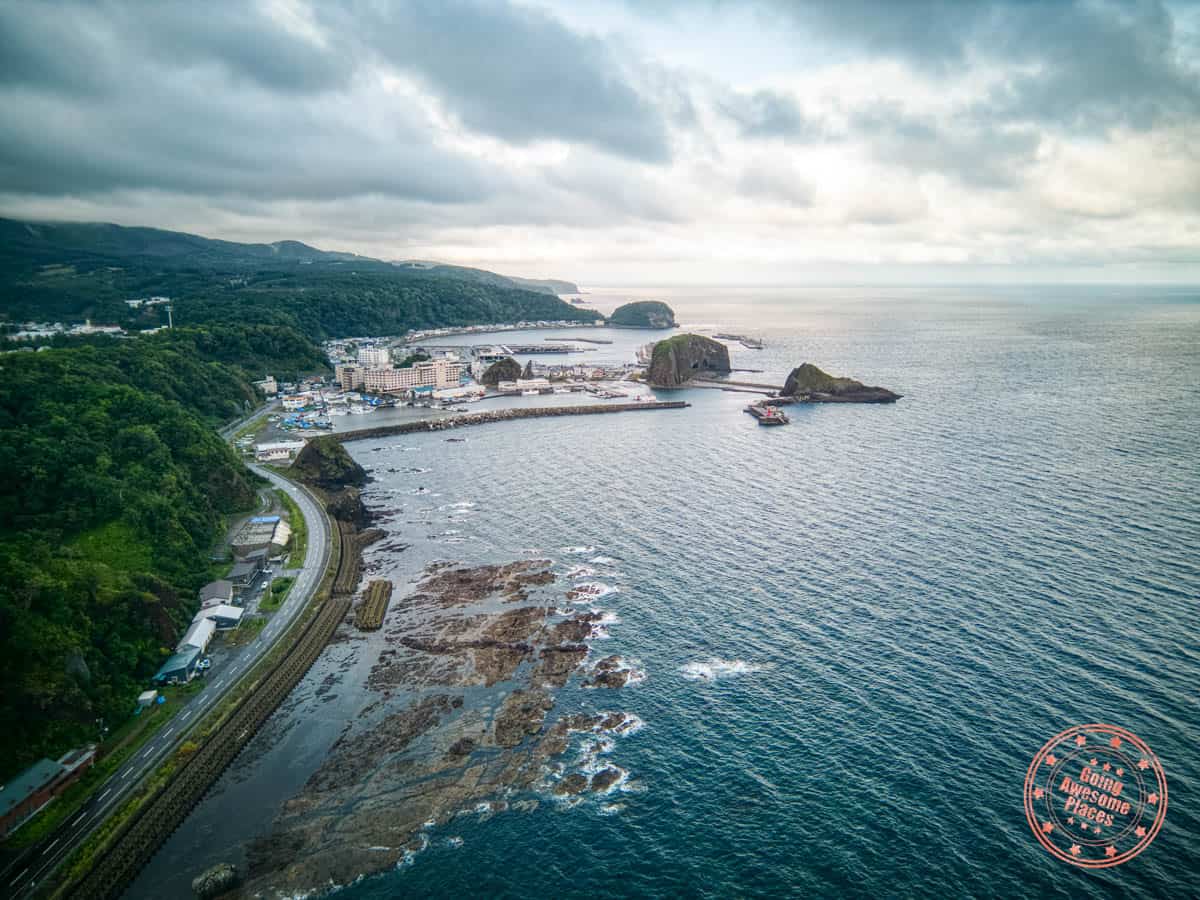
This epic guide for visiting Hokkaido is a great place to start if you’re unsure about whether it is the right region of Japan to visit for you!
TOP TIPS FOR TRAVELING TO HOKKAIDO
- Where to stay – The Royal Park Canvas is one of our favorite hotels in Sapporo. It’s in the perfect location right by Odori Park and their rooms have gorgeous scenic views over Odori Park and the TV Tower. We use Booking.com for all of our stays and use the Genius discount to get great deals on our hotel bookings. Alternatively, you can always see if hotel corporate codes might work for you.
- Must pack item – If you’re traveling to Hokkaido in the winter be sure to bring along your warmest gloves, a warm hat, and some super cozy snow boots! It gets surprisingly cold in Hokkaido, and with the island famously having 130 snow days per year you’re going to want to be prepared.
- Recommended tour – Get a feel for Hokkaido’s more rural areas on this awesome tour! The lavender fields are out of this world, and they were a definite highlight of our trip.
- Car rentals – If you’re hoping to get out of Hokkaido’s capital city Sapporo and visit the best Sakura spots and flower fields then we recommend renting a car for your trip. Make sure you know about ways to save money with car rental coupon codes and always start your search with Discover Cars and RentalCars so you know what the best deals are.
- Flights – If you are flying in from elsewhere, use the Skyscanner “Everywhere” feature to find the best deals from your local airport. Check how much it would be for you to get to New Chitose Airport!
- Insurance – Not always required, but always recommended! Make sure you’re covered with the best travel insurance. Our go-to is always HeyMondo for good all-around coverage at reasonable prices, also if you use our link you get 15% off!
- Hottest deals – Never be without our frequently updated travel deals page.
Get ready for an epic trip to Japan’s coolest winter destination! Find out everything you need to know about Hokkaido and decide whether it’s the right region for you before you book your flights.
Why Hokkaido Is Worth Visiting

Hokkaido is one of Japan’s 8 regions, as well as being its own island separate from the main island of Honshu. If you’re looking for the country’s best region to visit in winter – this is it!
The island is known for its freezing cold winter weather that brings with it snow and an annual Snow Festival celebrated in Sapporo, the island’s capital. We love Hokkaido because it has a great capital city with awesome landmarks, amazing skiing slopes, and some breathtaking hot spring regions tucked away in the mountains.
But there’s more to Japan’s northernmost island than meets the eye. The island also has a unique food culture that will tantalize your taste buds. Foodies can spend their time searching for the most peculiar seafood dishes, like the unusual Ikameshi dish made of simmered squid stuffed with sticky rice!
Whether you’re in Hokkaido looking to soak your worries away in the island hot springs or to take on the region’s most extreme outdoor activities – we’ve got your back. Let’s dive in.
Top Things To See And Do In Hokkaido

We’ve broken our top things to see and do guides down into activities in the island’s capital city, Sapporo, and a load of adventures you can go on beyond the capital.
While the capital is great for anyone who wants to experience Japan’s more modern flare and spend their evenings drinking sake in local bars, it might not be for you if you prefer the company of nature.
Sapporo is great for sightseeing and it’s also where the annual Sapporo Snow Festival is held, which was a highlight of the time we spent in Hokkaido. Once we’d seen all the ice and snow sculptures in Odori Park, we spent our time hopping between iconic landmarks like the Sapporo TV Tower, putting our taste buds to the test trying sea urchins at Nijo Market, and chilling at the hot springs in Jozankei.
That said, the Furano Flower Fields beyond the city offer a serenity you just won’t find in Sapporo and they’re a more attractive destination in the spring and summer months. And we haven’t even gotten into what’s on the far east and north of the island – there’s a lot to come!
Things To See And Do In Sapporo
Personally, we think Sapporo is definitely the highlight of the Hokkaido region. It blends outdoor adventure, culture, and classic city sightseeing in one, which is rare for a capital city! Here are some of the coolest things to do in the area:
Soak In Hot Springs At The Jozankei Onsen

The Jozankei Onsen hot spring area at the edge of Minami couldn’t feel more different than Sapporo’s busy city center. Come and relax in one of Hokkaido’s most popular hot spring districts, just an hour away from the city center. There are 56 hot spring sources in the area that were first discovered by an ascetic monk back in 1866. Soak in the healing waters and prioritize a day of relaxation on your trip!
Even though the Jozankei Onsen area is technically still a part of the city, this mountain village nestled surrounded by nature couldn’t be more different from the bustling atmosphere in Sapporo.
Climb Up The Sapporo TV Tower

This iconic 147.2 meter high radio tower is one of the city’s most recognizable attractions. Climb to the top and look out at the panoramic views of the city and mountains in the distance!
Our favorite part was the epic viewpoint we had over Odori Park. From high above, we could see straight down the park’s middle, which in winter was covered in a mesmerizing layer of glistening of white snow. During the Snow Festival, you can even see some of the giant ice sculptures from the tower – but you will have to squint to make out the shapes.
Incredibly, you can see as far as the stunning mountains that stretch out on the horizon. You won’t be able to make out the slopes of the Okurayama Ski Jump Stadium, but they are up there. If you’re a ski or snowboarding fan, you can start getting excited for the adventures to come!
Eat Uri (Sea Urchin) Rice Bowls At Nijo Market

The market has been going for over a century now, and a lot of the stalls’ recipes haven’t changed since they opened. Put your tastebuds to the test with local dishes like uni rice bowls and king crab! One of the most popular items on the menu is the uni ikura donburi, which is a mix of sea urchin and salmon eggs on a bed of rice.
Vibrant and noisy, the market’s stalls sit side by side and attract locals and tourists alike. Most of the restaurants are nestled along a narrow corridor, called Noren Yokocho, rather than being spread out amongst the seafood stands. We loved how lively the market was, and all the stand owners were chatty and friendly (even if not many of them spoke English).
Tired of the language barrier holding you back and ready to order like a local? Then check out our article about using the Rosetta Stone App to learn Japanese!
Check Out The Awesome Snow And Ice Sculptures At The Odori Site During The Snow Festival

The annual snow festival is a sight to behold! Giant ice and snow sculptures fill the already beautiful Odori Park, and the area comes to life with festivities.
Put on your warmest winter layers and get ready for an icy adventure. We were absolutely blown away by the size and detail of the sculptures. The sheer craftsmanship required to make them had us in awe.
There were scenes of a jockey riding his racehorse etched into a giant block of snow, traditional temples built up like snowy sand castles, and even some pretty cute and funny sculptures like Tamagotchi characters!
It’s worth knowing that there are three sites where the Snow Festival festivities take place. The most famous and busy is the Odori Site, which is where the biggest and most impressive snow sculptures are. But, there are also the Susukino and Tsudome Sites. The Susukino Site has more ice and snow sculptures, and even though they aren’t as big as the ones at the Odori Site, they are still definitely worth going to see!
The Tsudome Site is more geared towards families, so there are a lot of cool activities like a snow maze, snowman building competitions, ice slides, and snowball throwing challenges. You can read more about our experience at the Snow Festival on our 1 Week Sapporo Winter Itinerary.
Wander Around Makomanai Park And Escape The City Noise
 Image via Flickr by Koichiro Kitayama
Image via Flickr by Koichiro KitayamaIf you want to get out of the city, then Makomanai Park is the place to head to. It’s also where the figure skating rink used in the 1972 Sapporo Olympics is! If you visit during the winter months, you can even skate on the rink.
Spring is an especially popular time to visit the park, which is filled with blossoming cherry trees – it’s a great hanami spot.
Go For A Relaxing Wander Around Hokkaido Shrine

This cute Japanese shrine was built in the late 1800s by the decree of Emperor Meiji. The shrine itself is nothing spectacular, though we did like how traditional the architecture felt, and it was an incredibly peaceful spot.
The real magic are the 11,000 cherry trees in the surrounding Maruyama Park. In late Spring, the park comes to life in hues of soft pinks, which had us in complete awe!
Things To See And Do Beyond Sapporo
There’s a lot more to Hokkaido than its famous capital. For anyone looking to discover Japan’s wilder side, hit the extremist ski slopes, and put their hiking gear to the test then traveling beyond Sapporo is a must!
Soak Your Worries Away In Noboribetsu’s Hot Springs

Possibly the island’s most famous hot spring resort, the epic town of Noboribetsu is a maze of private onsens and has a great public bathhouse.
The town is a popular travel destination thanks to its scenic setting in Hell Valley. Considering the town is only an hour and a half away from Sapporo, the landscape changes dramatically.
One of the best onsens in town is Sagiriyu Public Bath. It’s the only public bathhouse and it’s right in the center of the town and has three indoor onsens you can switch between. There’s also a sauna which was great for steaming in!
But there’s more to Noboribetsu than just the onsens in town. If you decide to visit you should also check out the breathtaking Hell Valley, or Jigokudani. There’s a car park at the start of the valley, which is also right next to the Jigokudani Observation Deck.
From there, there’s a wooden walkway that takes you deeper into the valley to the natural hot springs. The sight of the steam rising from the snow-dusted valley was out of this world, despite the sulfurous eggy smell in the air.
The best part? You can easily reach Noboribetsu from the Sapporo Main Station on the Limited Express Suzuran train.
Hit The Slopes At The Sapporo Kokusai Ski Resort

Just an hour away from Sapporo’s city center, this awesome ski resort is one of our favorite winter attractions in Hokkaido. Glide through the thick snow and put your bravery to the test on their hardest slopes.
The snow in Japan is so fluffy and deep in January and February that snowboarding and skiers across the world felt it deserved its own name, so they coined it JAPOW! You can book your Kokusai Ski Resort lift pass and equipment rental through Klook! They have several package deals, so don’t panic if you don’t have stuff like ski jackets.
Enjoy The Later-Than-Usual Sakura Season In Hokkaido
 Image via Flickr by namhdyk
Image via Flickr by namhdykWhile most of Japan has its Sakura season in late March to early April, Hokkaido’s colder northern climate means the season starts a little later. Visit from early to mid-May to catch the cherry blossoms of the Sakura season, the island has some particularly special spots that are worth the wait. It’s also great news if you couldn’t get holiday leave and make it to Japan earlier in the spring.
A popular spot to see the cherry blossoms in Hokkaido is Nijukken Road in Shinhidaka, which is a 7-kilometre-long stretch of road with over 2,000 cherry blossom trees on it. During the annual Shizunai Cherry Blossom Festival, you’ll even see vendors walking up and down the road with little carts selling food, souvenirs, and drinks – it’s an awesome day out!
The Sakura season is fleeting wherever you are, so make sure you stay up to date on the peak bloom dates. Make sure you don’t miss the best of Sakura season by using this sakura forecast map!
It’s a super handy site because they update their forecast each year based on the regional weather conditions, so you’re guaranteed not to miss the best cherry blossom periods. If you can’t make it to Hokkaido in May, check out our Ultimate Guide To Cherry Blossoms In Japan guide to find out where else you could go for Sakura season.
Don’t Miss The Sakura Season At Goryokaku Park
 Image via Flickr by Andrés Guerrero
Image via Flickr by Andrés GuerreroOne of the absolute must-visit Sakura spots in the Goryokaku Park in Hakodate. This wildly impressive park in one of Hokkaido’s more southern cities is designed in a star shape and has cute canals running through it. Originally built as a fortress, the five-pointed star shape was designed because it offered better defense against invaders.
There are 1,600 cherry trees in the park, during the Sakura season they create a magical atmosphere which will be etched into your memory forever. As amazing as the park is during the day you have to visit at night too when the park is illuminated with lanterns!
- For the best views of the Goryokaku Park climb to the top of the 107-meter-tall Goryokaku Tower – the views are out of this world.
Spend A Day Exploring Otaru

This quaint harbor city is undoubtedly Hokkaido’s most charming destination. There’s a preserved canal area that’s lined with old warehouses that are reminiscent of times gone by.
The city is also dotted with peculiar Nishin Goten, known as Herring Mansions. The old buildings were used by wealthy fishermen as a home as well as a place to process their fish.
Because it’s just half an hour northwest of Sapporo it’s a popular day trip from the capital. We decided to visit on a tour so we didn’t have to think about any logistics, and we’re so glad we did!
This awesome tour from Sapporo to Otaru was a highlight of our trip. Our friendly guide took us along the canals, to a German Beer Brewery, the Otaru Music Box Museum, and the awesome Kitaichi Glass Factory.
Make The Most Of The Powdery Snow In Niseko
 Image via Flickr by Mints & Dreams
Image via Flickr by Mints & DreamsFamous for its ski resorts, Niseko is Hokkaido’s winter wonderland. Backcountry skiing is especially awesome, though it’s not for the faint-hearted!
Most of the ski resorts around Niseko are on Mount Niseko-Annupuri, which means you get epic views of Mount Yotei in the distance. A cool resort to consider is Rusutsu Resort, which has 3 different mountain peaks and 37 runs you can try out. You can check out their winter pass prices here.
Marvel At The Lavender And Fower Fields In Furano

Hokkaido has been a lavender cultivating region since the 1940s and the flower fields in Furano are out of this world. The lavender fields start coming into bloom in summer around late June and last until around mid-August.
But it’s not just the lavender fields that attract so many visitors. Most of the flower farms in the area grow a number of different flower species. For us, the most impressive farms were the ones where they had sewn flowers into perfectly straight lines and planted different varieties side by side, making the landscape look striped.
Farm Tomita is our favorite flower farm! It felt like we were in a fairy tale as we wandered through the acres of flower fields, with breathtaking views of the Tokachi mountain range in the distance.
Canoe Through The Kiritappu Wetland
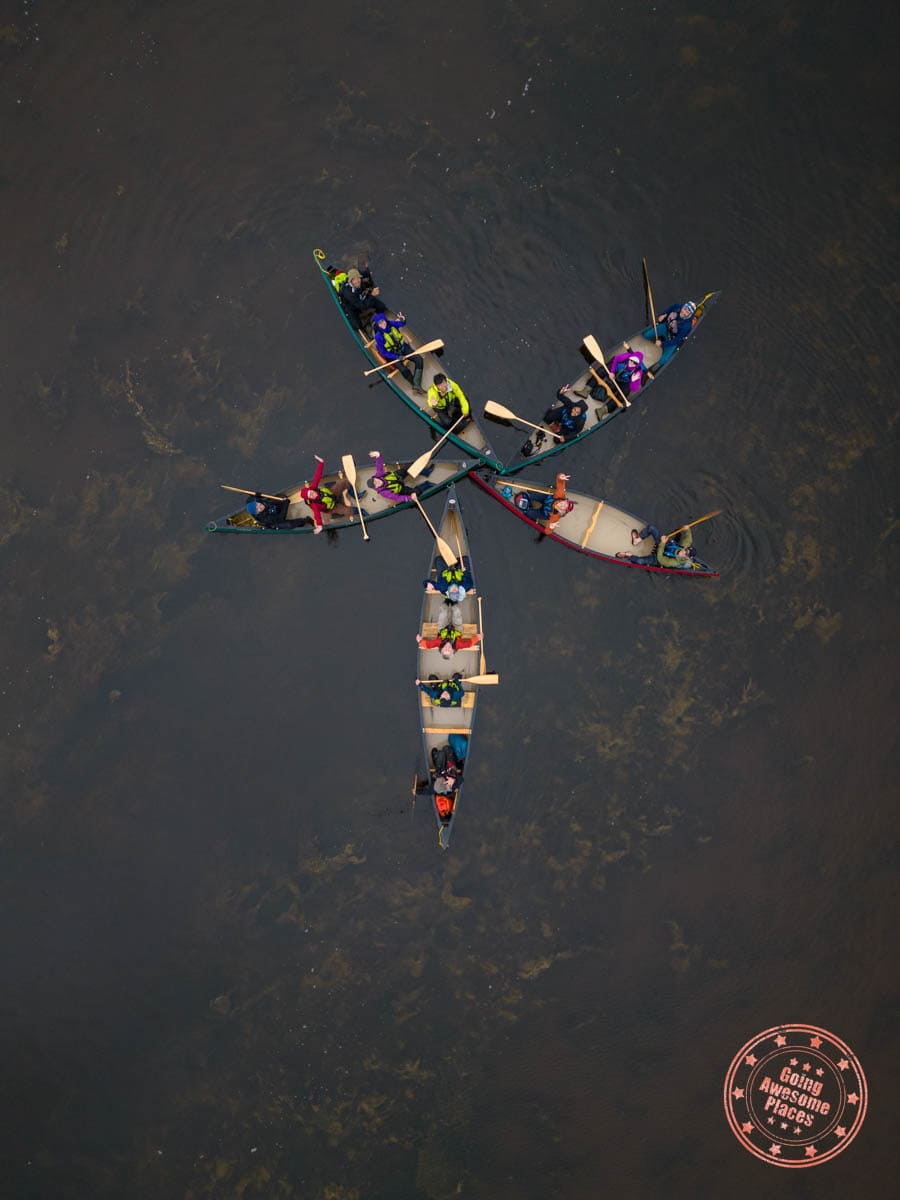
This wild marshland in the far east of Hokkaido is too boggy and treacherous to explore on foot, so join a local guide and paddle your way through the wetland on a Canadian canoe. You can find out all about our adventures in the far east of the island in our 9 Day Far East Hokkaido Itinerary!
As you row your way along the narrow river channels of the Biwase River you’ll come across lots of native bird species. We’d really recommend bringing a pair of binoculars to get a better look at them. If you’re a fan of photography don’t forget to bring a zoom lens! Keep your eye out for eagles and red-crowned cranes.
It’s hard to get a real sense of how vast the wetland is until the windy channels open up and you get a full view of the expansive marshland that surrounds you in every direction. It was a highlight of our time in the east of Hokkaido, and we were super glad that we booked to go with LanEdge. Their guides are friendly and know a lot about the region. They’ll also take charge of all the paddling and navigating, so don’t worry if you haven’t done any canoeing before!
Discover Hokkaido’s Untamed Landscape And Go Hiking In Daisetsuzan National Park
 Image via Flickr by Elena Leong
Image via Flickr by Elena LeongNicknamed the ‘playground of the Gods’, Daisetsuzan National Park is the home of towering mountain peaks like Mount Tomuraushi and Tokachi which have been putting even the most experienced hikers to the test for centuries.
A few volcanoes stand out against the park’s other peaks, like the park’s highest peak Mount Asahidake. At a staggering 2,291 meters tall, the trails to the top are an alpine adventure we just couldn’t resist!
It’s worth keeping in mind that winter isn’t the best time to come to Daisetsuzan unless you want to go skiing (you can access the Daisetsuzan Sounkyo Kurodake resort’s best slopes via the Kurodake Ropeway from the town of Sounkyo).
Lots of people stay in the eastern city of Asahikawa, which is the island’s second-largest city, and travel to and from Daisetsuzan National Park from there.
Hike To The Furepe Waterfall In Shiretoko National Park

This epic hike was part of our 9 Day Far East Hokkaido Itinerary. We started at the Shiretoko Nature Center, which has loads of information about the national park and the trails you can pick from.
We decided to do the 40-minute loop to Furepe Waterfall. The trailhead starts in the dense forest and then opens up to an expansive grassland. From there you’ll spot the epic Furepe Waterfall that drops down a steep cliff into the Sea of Okhotsk. It’s one of our favorite places in the Shiretoko Peninsula.
Make sure you stop to enjoy the views from the wooden observation deck, where you can see how the waterfall is fed by groundwater (that’s right, there’s no river at the top of the waterfall) and enjoy the gentle sound of the waves crashing below. Can you spot the lighthouse in the distance?
Visit Hokkaido’s Northernmost City, Wakkanai
 Image via Flickr by manuelamontero
Image via Flickr by manuelamonteroThe sleepy city of Wakkanai is Japan’s northernmost city. It’s a gateway to other destinations in the north of Hokkaido, like Rishiri Island and Rebun Island.
If you’re staying over before hopping on a ferry to these northern islands, then visit the city’s Hokumon Jinja shrine and hop on a bus to Cape Soya, the northernmost point of Japan. It’s so far north that on a clear day you can even spot the Russian island of Sakhalin in the distance. Bring binoculars if you want to stand a chance of getting a good look at it!
Explore The Alpine Flower Fields And Mount Rishiri On Rishiri Island
 Image via Flickr by Tomomi Sasaki
Image via Flickr by Tomomi SasakiRishiri Island is about 20 kilometers off the northern tip of Hokkaido. It’s a small island with some dramatic landscapes. Right at the center of the island is Mount Rishiri, a dormant volcano that gets covered in snow each year and because of the surrounding alpine meadows looks a lot like the Alps. The mountain is a staggering 1,721 meters tall and there’s a trail that leads you all the way to the rocky summit.
If you’re not up for taking on the arduous full-day hike to the top, then you can drive to the 5th Station on the Kutsugata side of the mountain for scenic views over the island.
Just 60 kilometers in circumference and with as few as 5,000 inhabitants across the island, this remote island is great for adventurous hikers and lovers of the wild who prefer to have the place to themselves.
The best time of year to visit is in summer when all the alpine meadows are in flower and the island becomes a sea of bright colors. Looking for some cool photography spots? Then head to Otatomari Pond in the south of the island where you can take snaps of Mount Rishiri bouncing off the water’s surface.
Discover Rebu Island’s Remote Landscapes
 Image via Flickr by Tani Kazuya
Image via Flickr by Tani KazuyaPart of the Rishiri-Rebun-Sarobetsu National Park, this isolated northern island off the shores of Hokkaido is even more remote than Rishiri, its neighboring island. Famous for its roughed coast, rare alpine flowers, and remote mountain peaks.
One of the most famous areas is Rebun Usuyukiso, which is home to the rare alpine flower of the same name. White and fluffy, it’s only found in Rebu Island. To see them, hike along the Rebun Forest Road and the Momoiwa Trail from June to August. The Momoiwa Trail is our personal favorite as there are dramatic views of Mount Rishiri in the distance from the Momoiwa Observation Deck!
Another must-visit spot on the island is Gorota Beach. While the beach’s white sand is enticing, the high winds make the sea pretty choppy so it’s more suited to a late afternoon stroll along the sand than a dip.
The Best Experiences To Book In Hokkaido

It’s no fun starting your holiday and realising you’ve left it too late to join the best tours in the region. There are some super unique experiences on offer in Hokkaido, but because of this they get booked up quick. Don’t miss out – book these Hokkaido adventures in advance!
- For an authentic hot spring experience, get out of the capital’s busy neighborhoods for a relaxing day in Hokkaido’s most famous hot spring district. Nestled in the mountains away from the crowds, it’s the perfect day trip for anyone in need of some rest and rejuvenation! We especially love this tour because you’ll get to learn about the Indigenous Ainu people as well as exploring the Jozankei hot spring village!
- We loved the hot springs in Jozankei so much we even think they’re a contender with the hot springs around the base of Mt Fuji, which you can read all about in our Ultimate Guide To The Most Romantic Things To Do In Japan For Couples.
- If you’re visiting Japan during the Sakura season, then you can’t miss the chance to engage in the practice of hanami. This Japanese practice of stopping to enjoy the transient beauty of the blossoming flowers encourages you to take a moment to reflect on how beautiful and fleeting life is.
- This enchanting cherry blossom tour of Sapporo visits the legendary Nakajima Park as well as other popular hanami spots. If you want to find out more about the Sakura season in Japan you should definitely read our Ultimate Guide To Cherry Blossoms In Japan guide!
- Younger backpackers in Japan shouldn’t miss out on a chance to let their hair down and experience Hokkaido’s best nightlife! Go wild and party like a local on this Susukino nightlife experience – expect there to be karaoke! Try as many sake flavors as you can get your hands on and discover all the best bars and clubs in Sapporo.
- Let a local guide you to all the best food stalls in Nijo Market. You’ll get to try all the quirkiest seafood dishes and chat to the stall owners. Foodies will especially love this tour which will push their taste buds to the limit.
- For us, the highlight of the tour was trying sea urchin for the first time! Known as ‘uni’, the fleshy meat inside the urchin’s spiky outer shell is pried out and eaten raw. It’s not for the faint-hearted, but mixed with a little soy sauce, it’s surprisingly tasty.
- If you want to get a feel for Hokkaido’s more rural areas then this tour is for you! Visit the gorgeous Blue Pond and marvel at the glistening blue water. Stroll through the colorful Furano Flower Fields and marvel at how the perfect rows of different colored flowers make the landscape look stripy.
- Make sure you book your canoe tour of the Kiritappu Wetland with LandEdge well in advance. We recommend you book a good 2-3 months ahead of time, especially if you’re a bigger group. Don’t panic if they’re page comes up in Japanese, you can contact them with enquiries in English, and they’ll get back to you pretty quickly.
Where To Stay In Hokkaido’s Capital, Sapporo
On your visit to Hokkaido, we suggest staying in the capital city which is where all the main attractions are. We’ve picked a hotel from each of our favorite neighborhoods to get you inspired:
MID-RANGE
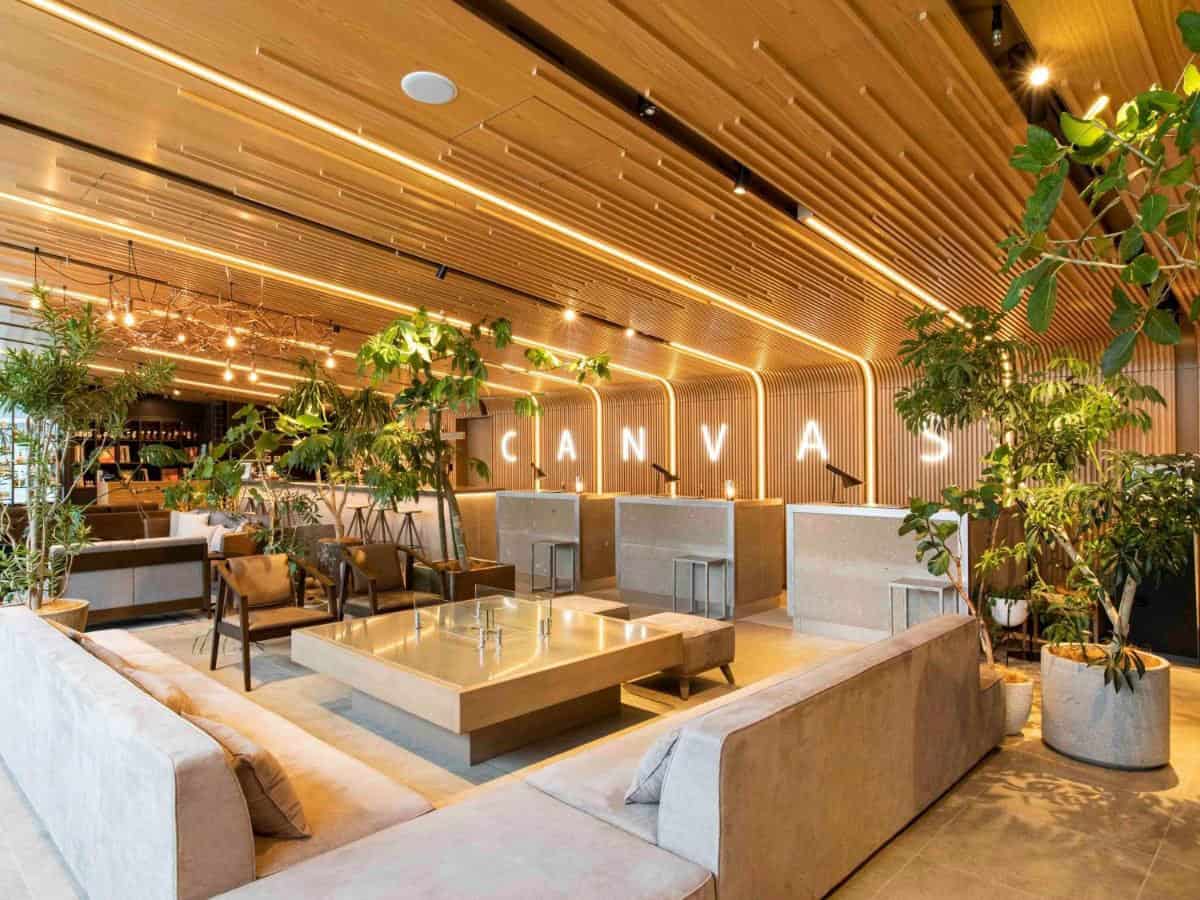
The Royal Park Canvas
For a central hotel right by Odori Park, stay in one of the stunning, earthy rooms at The Royal Park Canvas. They come with scenic views over Odori Park and the TV Tower!
Check out their rooftop lounge area while you’re there and get some awesome pictures of yourself with the TV Tower. The hotel couldn’t be better located, just 8 minutes’ walk away from Odori Park and within 5 minutes’ walk to the TV Tower. Nijo Market is just a few blocks away too.
APARTMENT
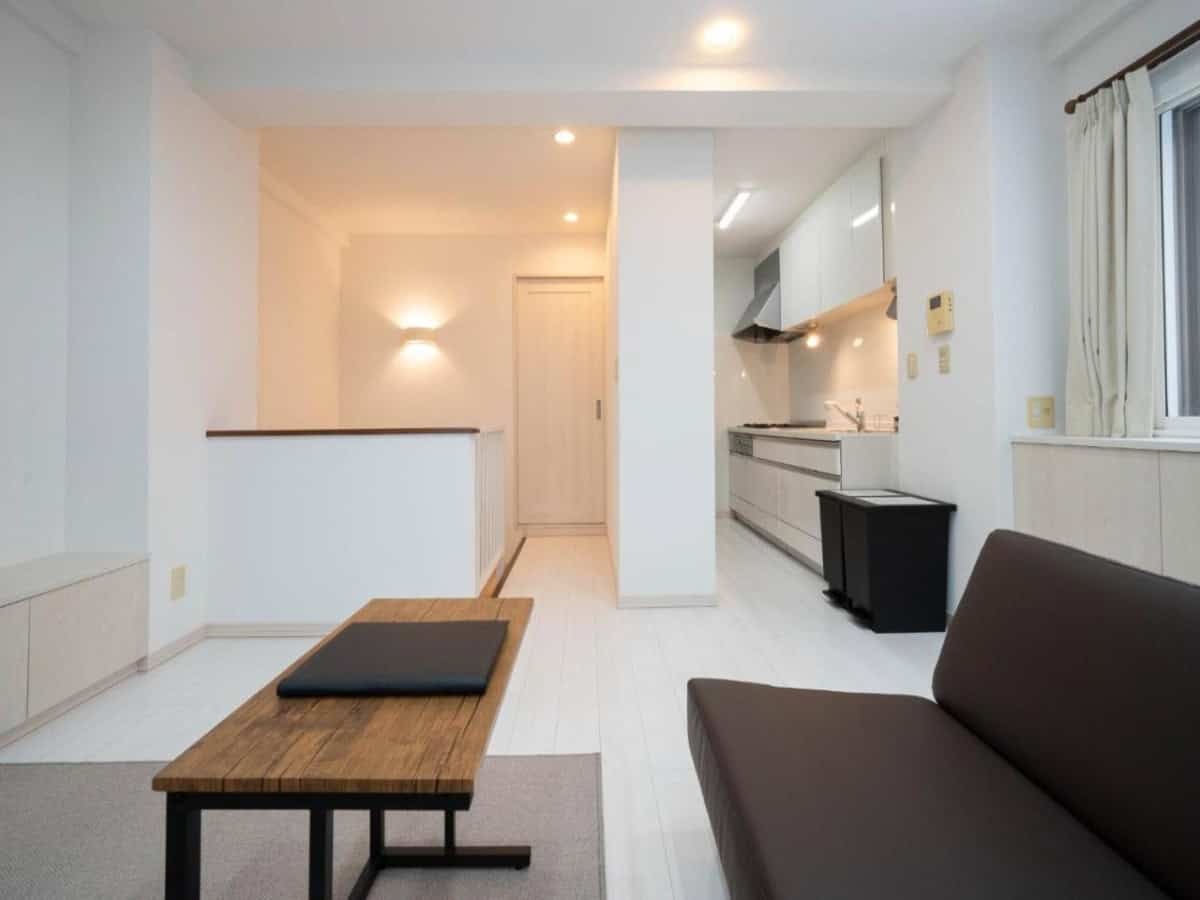
Base 01 Building Vacation Stay
This awesome apartment in the lively Susukino area is a pretty rare find. This spacious modern flat has extra sofa beds to accommodate up to 8 people, for groups it is an absolute steal. If you’re traveling as a big group skip the hotels and have the whole place to yourselves. You’ll save money too!
LUXURY
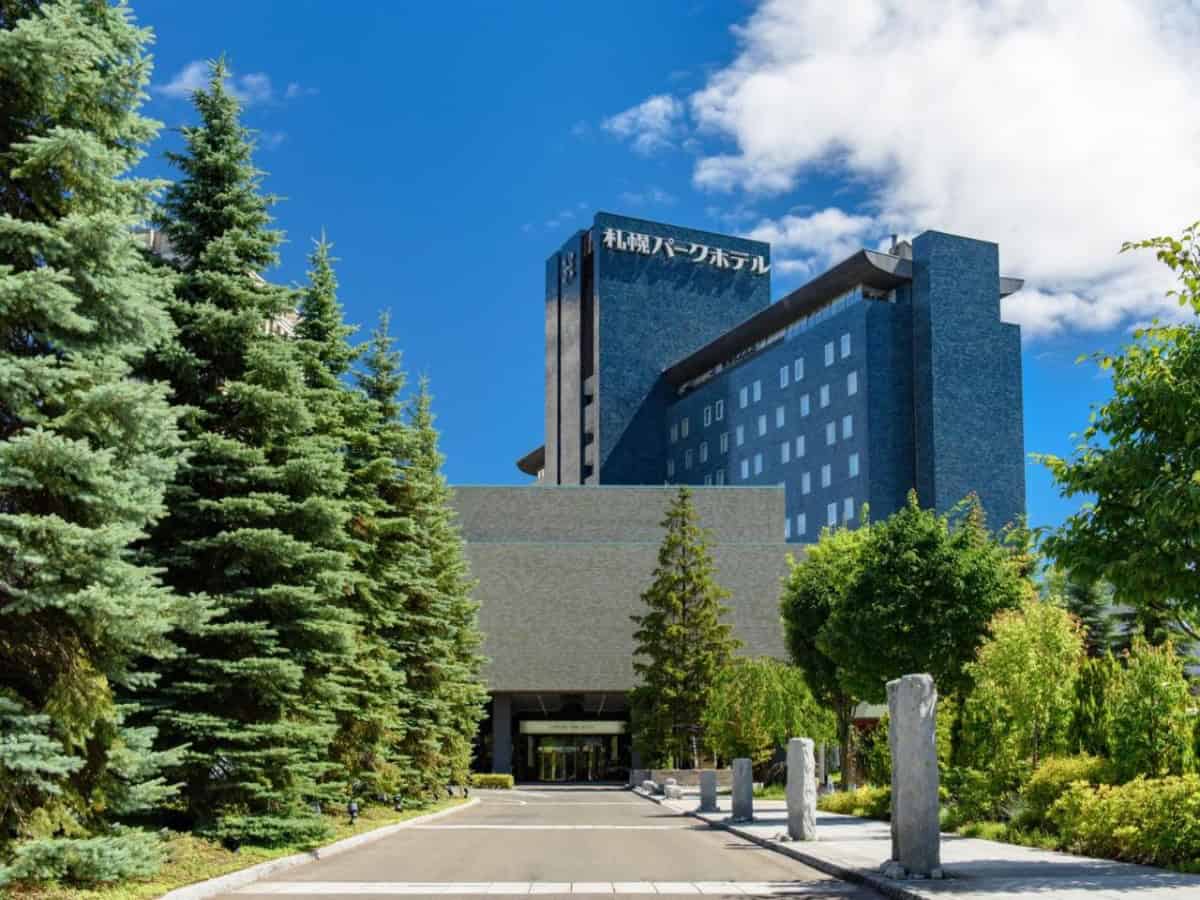
Sapporo Park Hotel
Treat yourself to an elegant room in the tranquil Nakajima Koen area. Conveniently located just one minute away from Nakajima Koen Subway Station, this hotel has its very own restaurants and shopping arcade! If you’re celebrating a special occasion, book a massage at their hotel spa or try Aromatherapy for the first time. This hotel is definitely on the luxurious side.
LUXURY

Jozankei Tsuruga Resort Spa Mori no Uta
Stay on the outskirts of the Minami Ward in the city’s hot spring village. Sleep in the mountains surrounded by the lush greenery and spend the day relaxing in the hotel’s very own hot springs in the Jozankei Onsen area.
Our Favorite Hotels In Hokkaido
If you don’t fancy staying in Sapporo and you’re wondering about other cool places to stay, we’ve got you covered! Not everyone is a fan of the hustle and bustle of city life and since Sapporo is Hokkaido’s capital it can get pretty chaotic.
For a more tranquil holiday, consider staying in Otaru which is a much smaller city with a laid-back atmosphere and slower pace of life. Another option is to stay in Furano, which is really close to the breathtaking Furano Flower Fields. This is our top pick for any nature fans who want to be as close as possible to Hokkaido’s lavender farms.
For any wild travellers who like to be out in the sticks – we’ve got a special hotel in store!
- Little Barrel (TripAdvisor/Booking/Agoda): This super affordable and cozy hotel in Otaru is a steal! The owners are extremely friendly and helpful, and the rooms are great value for money. It was easy to get to the city’s main highlights, like the canal area and the Otaru Museum by using public transport.
- Hostel Tomar (TripAdvisor/Booking/Agoda): Looking for a place to stay near the Furano Flower Fields? Hostel Tomar is a modern and rustic hostel with private and family rooms on offer. They have loads of cool common spaces where backpackers can hang out and meet other travelers too, so it’s great if you’re traveling by yourself. Our favorite thing about this hostel is that it’s a 15-minute drive away from the Tomita Farm!
- Higashikawa Asahidake Onsen Hotel Bear Monte (TripAdvisor/Booking/Agoda): For our wilderness seeking readers, we can’t recommend this stunning hotel nestled amongst the forest in Daisetsuzan National Park enough. The Asahidake Ropeway is a 3-minute walk from the hotel. It takes you to the Sugatami Station which has epic mountain views, so it’s a great option for adventurous travelers looking for an adrenaline rush or a fun way to break up a mountain hike. Not only is the location amazing, the hotel also has an onsen and sauna where you can unwind at the end of the day.
What To Pack For Hokkaido
If you are visiting during the winter months, don’t underestimate the cold. This handy packing guide includes everything you should think about packing so cold fingers and toes don’t spoil your trip!
- Snow boots – Bring along a pair of cozy snow boots to keep your feet protected from the chilly cold! There’s nothing more upsetting than having cold and wet feet when you’re on holiday. If you’re visiting in the warmer months, then bring some lightweight hiking boots or comfy trainers instead.
- Pack a good pair of mittens or gloves – We really recommend going beyond the usual cheap, knitted gloves and spending a bit more money on a pair of sealskinz gloves. They aren’t the cheapest, but you really do get your money’s worth. We’ve had ours for years now! It’s very likely you’ll be making loads of snowballs while you’re in Hokkaido, and if you’re going skiing, these are a must.
- Pack warm gear for the snowy weather – Hokkaido gets really cold in winter and experiences some of the country’s most extreme weather. Considering the region gets 130 snow days per year, it’s unlikely you’ll miss the snow and cool climate entirely. Bring along thermals to wear under other layers and a thick winter coat.
- Bring your best camera – Capture your awesome trip away and take family photos you’ll treasure forever! You might want to think about packing other accessories like selfie sticks and a lens hood (which guarantees reflection-free travel photos).
- Remember to pack a travel adapter – You’ll need a two-pronged Type A for Japan, so check your plugs to see if you need to get an adapter ahead of your trip.
- Bring hand sanitizer. It’s not unusual for there to be no soap in public and restaurant toilets in Japan.
- Get some Japanese Yen ready before your trip – It’s always a good idea to pack some cash in the local currency before your trip in case you need cash to pay for your transport from the airport or you find yourself in a sticky situation.
- Make sure you check that you can use your bank card to take out Japanese Yen whilst abroad without being charged hefty fees! If not, plan ahead and bring all the travel money you think you’ll need. In our 10 Day Japan Itinerary we estimated it costs about $147 per person per day to travel in Japan.
- Check if you need a Visa before your trip – Most countries don’t need a Visa for a short holiday in Japan, but make sure you check the unique requirements for your country so you don’t run into any unexpected problems. You can find more about it on the Ministry of Foreign Affairs of Japan website.
General Travel Tips for Hokkaido
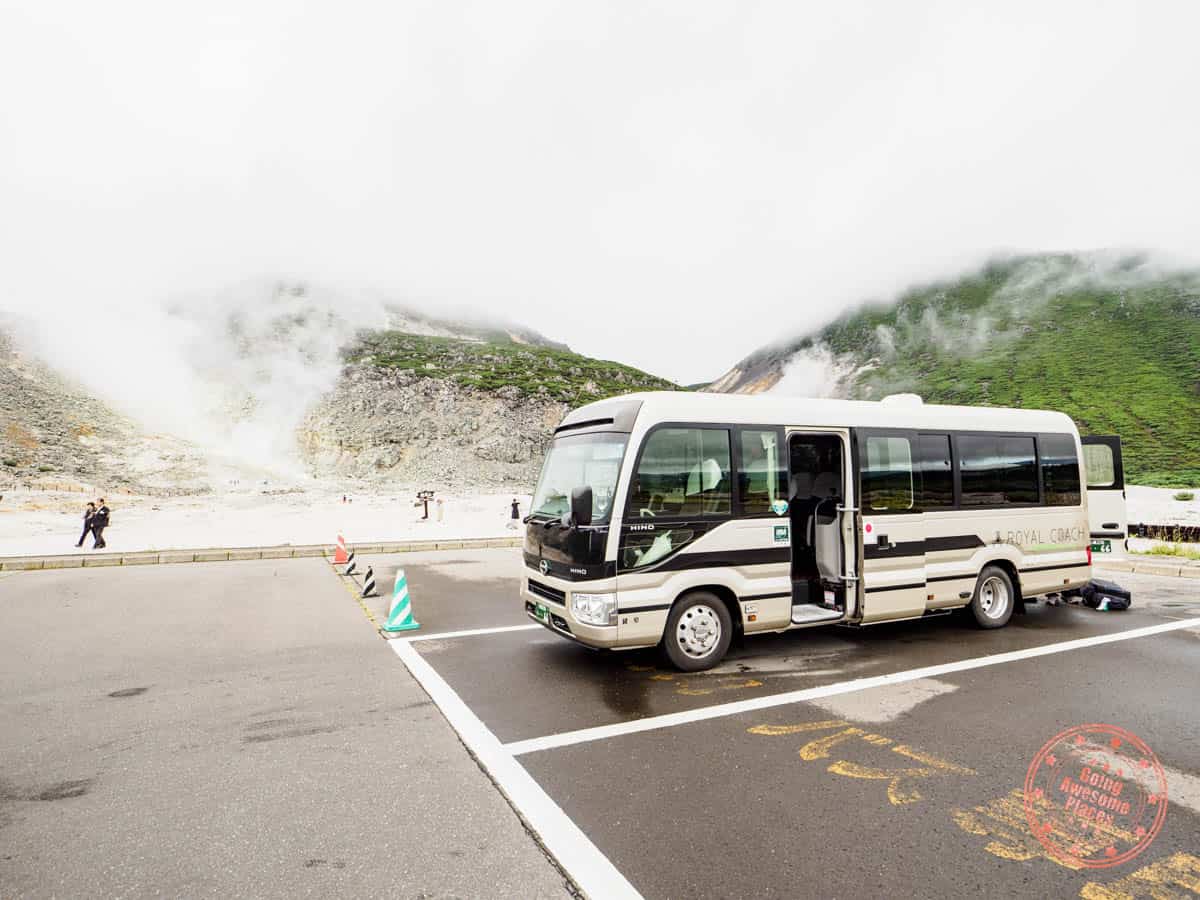
When is the best time to go to Hokkaido:
We recommend visiting in the winter! The island becomes a fairy-tale-like winter wonderland in the colder months. Outdoor enthusiasts can enjoy flying down the island’s awesome ski slopes while travelers looking for a more chill experience can hide away from the bitter cold in the hot springs and admire the snowy mountains stretching out before them.
Did you know that Hokkaido gets 130 days of snow a year? So your chances of seeing snow while you’re there are very high! Make sure you bring along warm enough layers!
The absolute best month of the year for visiting Hokkaido is February! That’s when the annual Snow Festival is celebrated, so you’ll be able to join in on the winter fun and see the city center brightly lit up. The ice and snow sculptures by Odori Park are always super impressive!
What you shouldn’t miss in Hokkaido:
There are some iconic attractions in the region’s capital Sapporo that you just can’t miss. They’re by no means off-the-beaten-track destinations, but they’re still some of our favorite Hokkaido landmarks.
The Odori Park is a must and also where most of the festivities are during the Snow Festival. The park is massive and it cuts right down the middle of the city, so it’d be hard to avoid it even if you tried! Next up is the Sapporo TV Tower because of how awesome the 360 panoramic views from the top are. We took some of our coolest holiday snaps there!
Even though it’s a little harder to reach because it’s out of the city, the hot spring village Jozankei Onsen is an unforgettable place. It won’t come as a surprise that all these spots made it onto our 1 Week Sapporo Winter Itinerary.
But, there’s more to Hokkaido than its lively capital city. Sports enthusiasts can’t miss a trip snowboarding through the powdery snow that coats the mountains surrounding Niseko, like the epic slopes of Rusutsu Ski Resort.
Not sure you can hack the cold? Then visit in late May during the region’s Sakura season. Wander along the 7-kilometer-long cherry blossom-lined Nijukken Road or stroll through Goryokaku Park at night when the 1,600 blossom trees are lit up by hanging lanterns.
Top tips for when you’re in Hokkaido:
- To help you get your bearings and make sure you stay in a neighborhood that matches your vibe, read up about Sapporo’s 5 coolest neighborhoods. Our Where To Stay In Sapporo guide includes everything you need to know about what to do in each neighborhood and awesome hotel recommendations for each!
- Sapporo is the home of miso ramen, so remember to check out our How To Eat Ramen In Japan article to learn about the ramen eating etiquette in Japan and unspoken rules before you visit Ramen Alley!
- If you have enough time in Sapporo and you’re there during the Snow Festival, don’t only visit the Odori Site! The Tsudome Site is especially fun for families traveling with small kids.
- If you’re getting the bus to the Kokusai Ski Resort then make sure you have cash because they don’t accept card payments. You can find out more about our experience at the ski resort and get extra tips in our 1 Week Sapporo Winter Itinerary.
- Make sure you don’t miss the best of Sakura season by using this sakura forecast map.
- Get a JR Pass and Suica card to save money on public transport!
How to get around Hokkaido:
Japan is known around the world for its reliable transport network, and Hokkaido is no different! Everything ran smoothly and on time when we were there. Another great thing about Hokkaido is that Google Maps is super up-to-date and gives you updates on transport delays, traffic, and metro and bus schedules.
Check out other apps you should consider getting ahead of your trip in our 12 Of The Best Apps For Japan Travel guide!
If you’re planning on staying in Sapporo, you can use the city’s extensive network of metros and buses. There’s even a cool streetcar that runs through the city. If you’re there during the warmer months, you’ll likely use the buses most, but in winter, it’s generally better to use the subway because the snowfall can cause delays on the road.
Whatever public transport you’re using, you’ll definitely need to get an IC Card for your trip. We recommend opting for the Suica card as that one works for buses, trains, and subways. There are often day tickets available, but we advise against them as they work out more expensive in the long run.
We would recommend renting a car for this trip if you aren’t planning on booking many tours. Some of the ski resorts and areas like the Furano Flower Fields are more out of the way and harder to reach by public transport. Save yourself time and hassle and get a rental for your Hokkaido holiday!
Alternatively, get your hands on a JR Pass and travel around Hokkaido by train. There are lots of train routes all over the island from the JR Sapporo Station, the city’s main rail hub. You can find out all about the JR Pass here.
Did you know, you can even reach Hokkaido from Japan’s mainland on a Shinkansen bullet train? Pretty cool, right?
Common travel mistakes:
- Don’t stay in Susukino if you want to relax and unwind. The area is known for its lively nightlife and busy shopping district. Instead, opt for the Nakajima Koen neighborhood and stay at Sapporo Park Hotel for a tranquil stay with views over the neighborhood’s stunning park.
- To reach Sapporo, fly into the New Chitose Airport instead of other major airports on the island like the Kushino Airport. Seeing as so much of the action is concentrated in and around the region’s capital we recommend flying to Sapporo and using the city as your base, then exploring other parts of Hokkaido from there.
- Not going skiing or snowboarding! Did you know that the snow in Hokkaido is so good it even has its own name? They call the light and fluffy snow JAPOW. The term was coined to describe the perfectly dry and deep powdery snow that Japan is blessed with in January and February. Missing out on the JAPOW season would be a real shame!
- You can read all about how we made the most of Hokkaido’s picture-perfect snow in our 1 Week Sapporo Winter Itinerary. If you want to avoid queueing for your ski rental equipment, then book it in advance through Klook or get to the resort early and head straight to the rental center in the basement at Kokusai Ski Resort just before it opens.
Escape To Japan’s Winter Wonderland And Go On A Wild Adventure in Hokkaido
Hokkaido is an epic winter escape that keeps on giving. From the island’s famous JAPOW snow that attracts snowboarders from around the world to the insane ice sculptures at the Sapporo Snow Festival. Hopefully, this epic guide to Hokkaido has helped you get your bearings and gotten you as excited about Japan’s northernmost island as we are!
Not a fan of the cold? Then visit during the island’s Sakura season or in the summer when the lavender fields are in bloom. We absolutely loved our time in Hokkaido, and we think everyone should go at least once (but trust me, you’ll want to come back again!)
Go Deeper In Hokkaido
We’ve only been able to give you a whistle stop tour in this run down of Hokkaido, but we have loads more great information about each of the island’s areas and what we got up to on our trip! We’ve even written a handy guide of the best places to stay in Sapporo.
- 9 Day Far East Hokkaido Itinerary – Dive into the wilder side of Hokkaido. The raw and authentic landscapes are off the beaten track, so you’ll get to experience the island’s rugged coastland, epic wetlands, and much more! A highlight of the trip was going on a whale-watching adventure and learning about the many species of whales that travel through the nutrient-rich Nemuro Strait.
- 1 Week Sapporo Winter Itinerary – Our epic winter itinerary includes everything you need to know about the Sapporo Snow Festival, loads of information about getting to the Kokusai Resort, a guide to our saddle and paddle adventure in Jozankei, and loads more must-see attractions! We were blown away by how magical Sapporo is in winter and glad we had planned a longer trip to the city, so we didn’t have to skip anything.
- Where To Stay In Sapporo – Not sure where to stay in Sapporo? Then check out this handy guide where we dive into Sapporo’s 5 coolest neighborhoods. The guide includes everything you need to know about what to do in each neighborhood and awesome hotel recommendations for each!
- The Art Of Trip Planning – Although this article isn’t specifically about Hokkaido, it’s a useful guide for anyone new (or old) to traveling. Starting to plan a trip can be really daunting, but with this guide you’ll be an expert in no time!
Hokkaido Frequently Asked Questions
How do I get to Hokkaido from Tokyo?
If you’re on the mainland of Japan and you want to combine your holiday with a trip to Hokkaido it’s easily done! There are a few ways to get from Tokyo to Hokkaido. The first is to fly. It’s a popular route so there are loads of flights each day. The flights from Narita Airport tend to be cheaper than flying from Haneda Airport. The trip is super speedy, and you’ll reach Sapporo’s New Chitose Airport in an hour and a half.
If you’d rather not fly, another option is to take the Shinkansen bullet train. The journey takes about 7 hours, but the advantage is that you’ll get to see parts of Japan along the way that you wouldn’t usually see. If you’re not in a rush, this is definitely the scenic route.
Which month is best to visit Hokkaido?
Hokkaido is a great year-round destination because there are different things to do and see in each season. But there are two months that stand out as the best times to visit, February and May.
We personally love going in February when the JAPOW snow is thick and the Sapporo Snow Festival is in full swing.
But later on in the year, from early to mid-May is the Sakura season. The parks brighten up in soft hues of pink and there’s a tranquil atmosphere all round as everyone comes together to enjoy the transient beauty of the fleeting cherry blossom.
Is Hokkaido the coldest part of Japan?
Because Hokkaido is the northernmost island in Japan, it’s also the coldest. Compared to other parts of the country you can feel the difference in temperature right away, which is why some thick thermals and snow boots are a must in the winter season.
Temperatures can get as low as -30 degrees celsius in more extreme cases and Hokkaido is known for its thick snow. But we think this is part of what makes Hokkaido so magical, and as long as you’re prepared for the weather there’s no reason for the cold to put you off!
How much does it cost to have a vacation in Hokkaido, Japan?
Holiday costs are super individual to each traveler. Your budget won’t look the same if you’re staying at luxurious hotels with private onsens and eating wagyu beef versus opting for shared dorms and sticking to affordable street food.
To give you a rough idea, in our 10 Day Japan Itinerary For First Timers we costed out our trip to Japan and averaged $147 per person, per day. It’s worth considering that this might get more expensive if you’re visiting in the peak season (spring and autumn), as hotel and flight costs can go up. We found that most of our money was spent on food – but it was so delicious we don’t regret it one bit!
Japan Trip Planning Essentials And Discounts
If you’re in the middle of booking your trip to Japan, here are the most important places you need to go to book:
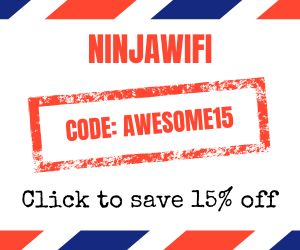
- JR Pass – The two most reliable places we always check are JRailPass and JRPass. If you are taking long distance Shinkansen across multiple region, get the full JR Pass. If you’re focusing on one specific area, you only need a JR regional pass. The official booking platform is Smart-Ex.
- Shinkansen – The JR Pass prices have gone up and for many of you, it’ll make more sense to book tickets individually. The secret is that when you buy your Shinkansen tickets through Klook offers special vouchers for Don Quijote and BIC when booking. Their tickets are super easy to redeem as well. Right now, use code SKS10OFF to save $10 USD off.
- Hotels/Ryokans – In Japan, the best website for accommodations, hands down is Agoda. When we’ve compared them against Booking, Agoda consistently came out cheaper.
- Tours – While Viator and GetYourGuide are our go-to’s, Klook and KKDay are much popular in Asia so it’s always worth comparing across all of them to make sure you get the best price. With Klook, use code GOINGAWESOMEPLACES to save up to 10% on your first booking.
- Pocket Wifi – While we do love eSIMs, having a pocket wifi is great for sharing data with a large group. The most popular is NinjaWifi which is easy to pick up at the airport. Use code AWESOME15 to save 15% (automatically applied). Alternatives are offered by JRPass and JRailPass but they aren’t as cheap. For a more global solution, consider Solis and PokeFi.
- eSIM – The best one is Airalo. Save money by getting the Japan region eSIM and use referral code WILLIA9500 to get $3 USD credit on your first purchase. From now to Feb 29, the 10GB package is half price as well! Ubigi is another one that we’ve had success with where they uniquely offer 5G coverage. Use code AWESOME10 to save 10% on your first order.
- Car Rental – Big companies like Budget, Avis, and Enterprise operate in Japan but they’re usually the most expensive. The best companies are the local Japanese ones such as Toyota Rentacar, Nippon Rentacar, Orix Rentacar, Nissan Rentacar, and Times Car Rental. To make things easier, use Rentalcars and Klook to compare prices all in one place. Don’t forget, you need an IDP to drive in Japan so get one before you leave your home country.
- Learn Japanese – It helps to know even a bit of the language before you go. Start your learning with Rosetta Stone Japanese.
- Cash or credit – Cash is still very important to have in Japan but when you use credit cards, make sure you’re not getting charged those extra exchange rate fees. The best card right now is the Wise Multi-Currency Card which is actually a debit card where you can convert at favorable rates beforehand. This cuts out any sneaky transaction fees.
- Travel Insurance – Make sure you’re covered in case something happens. Get quotes from HeyMondo where booking through our link gets you 15% off automatically and if you’re from Canada, get quotes from RATESDOTCA.
- Shopping – Discovering Don Quijote is a quintessential part of the Japan experience. The secret for tax-free shopping is that they have a coupon that can help you save 10% off + additional 5% off if you spend ¥10,000 or more.


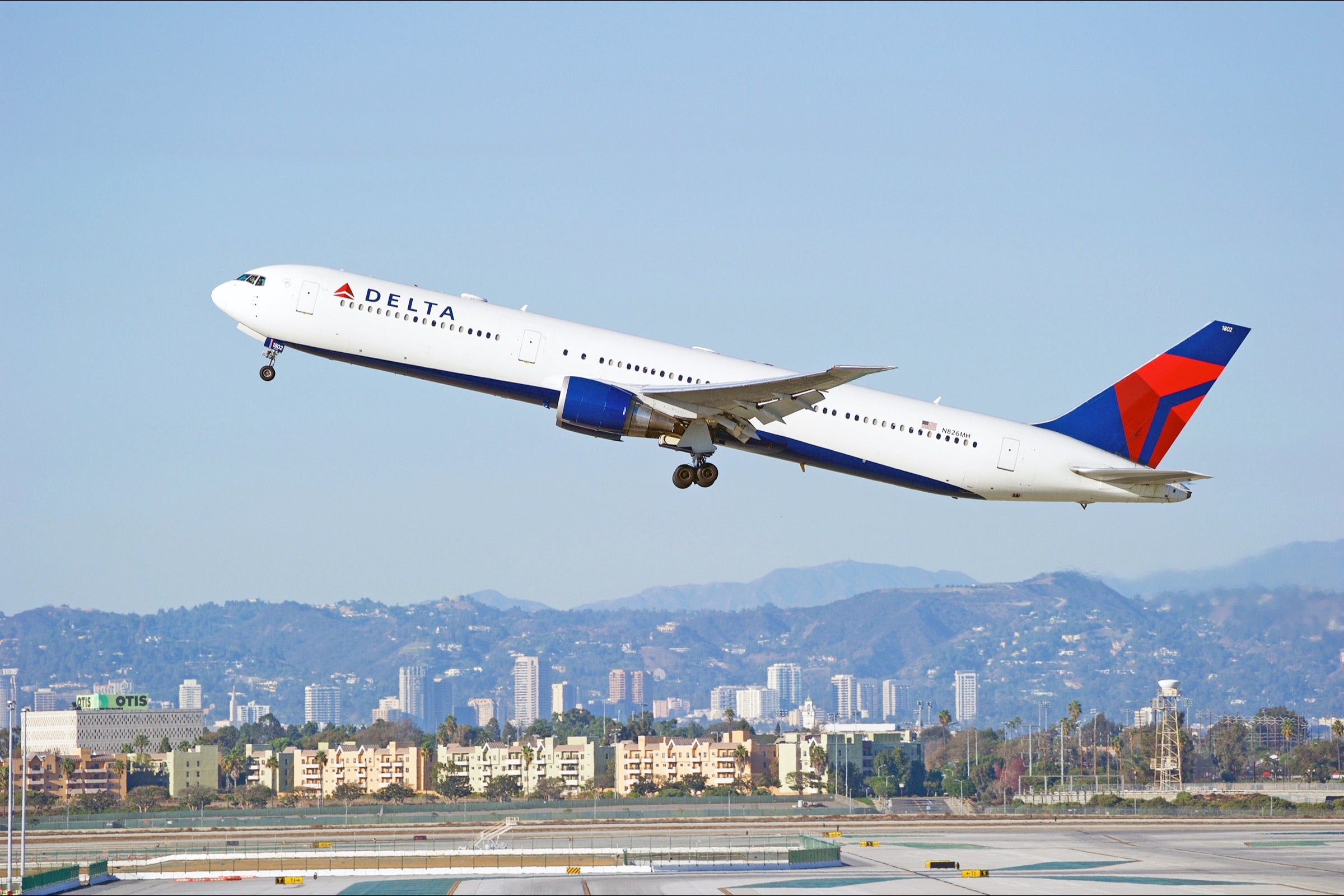
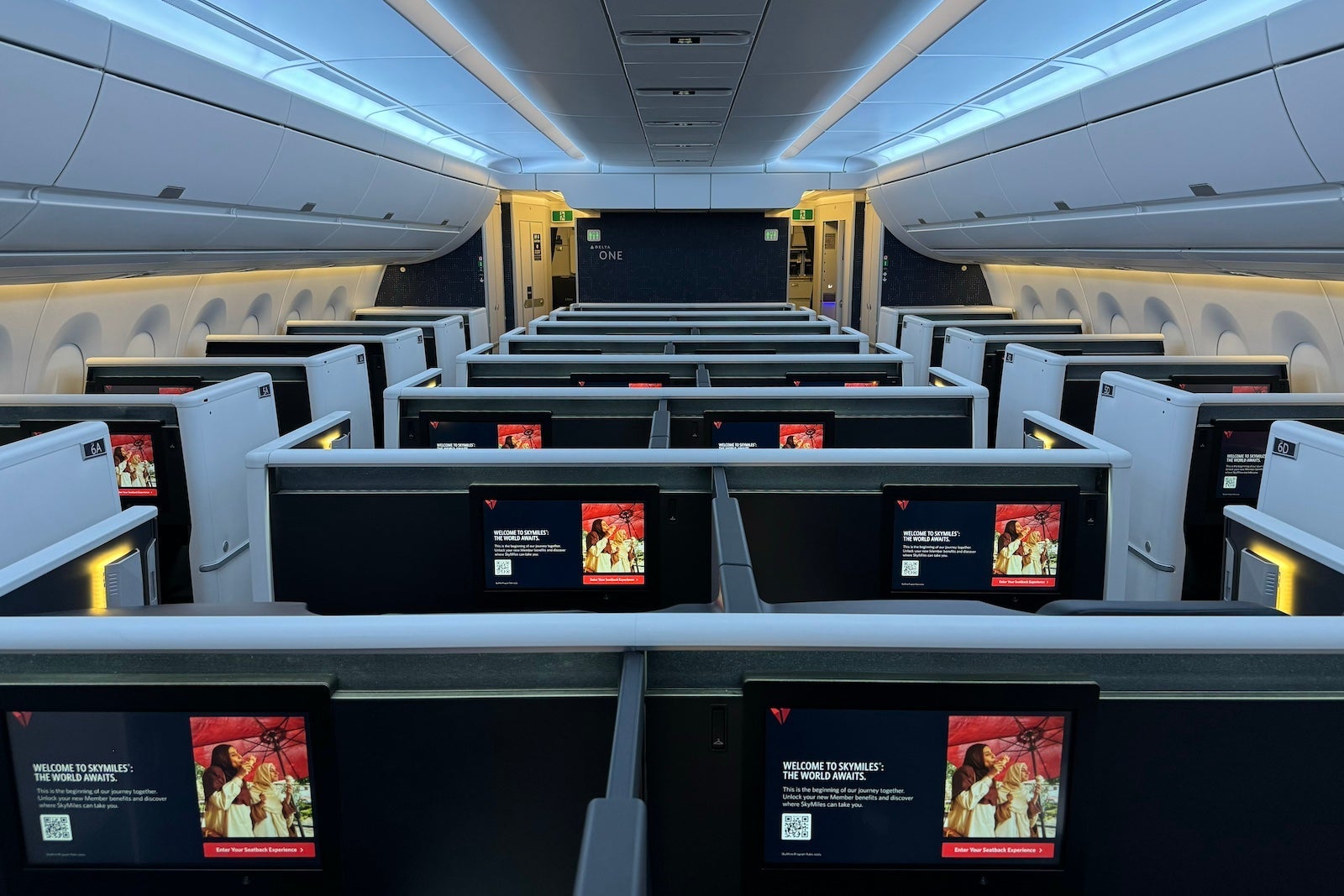
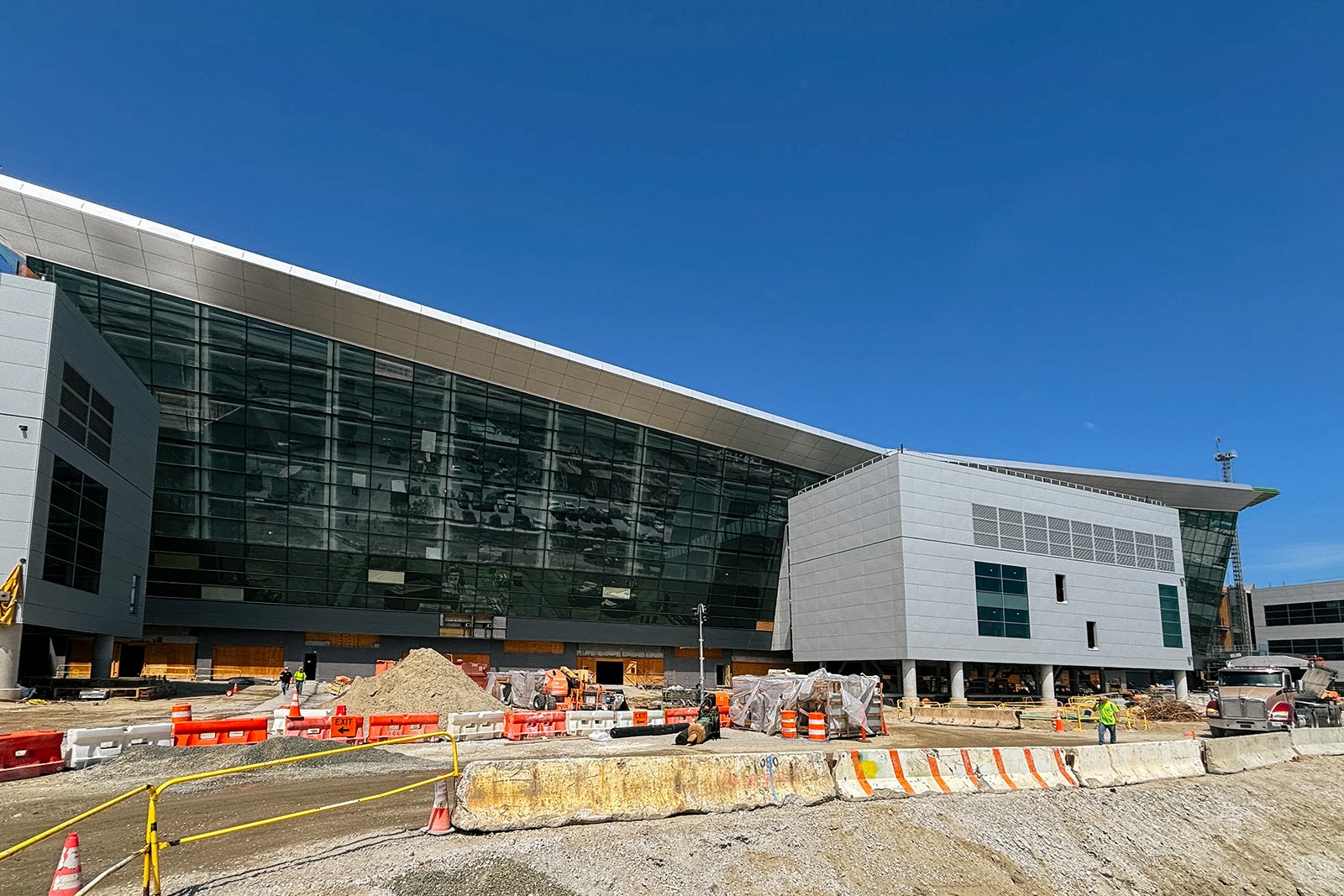
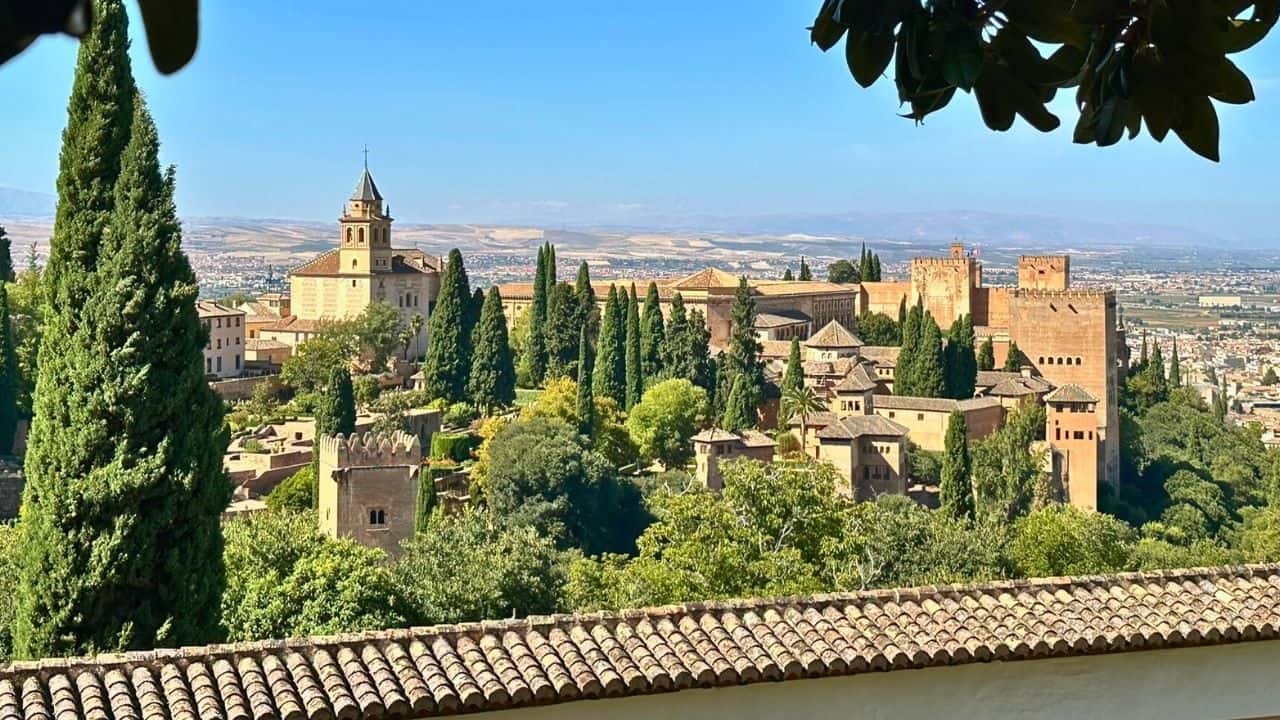



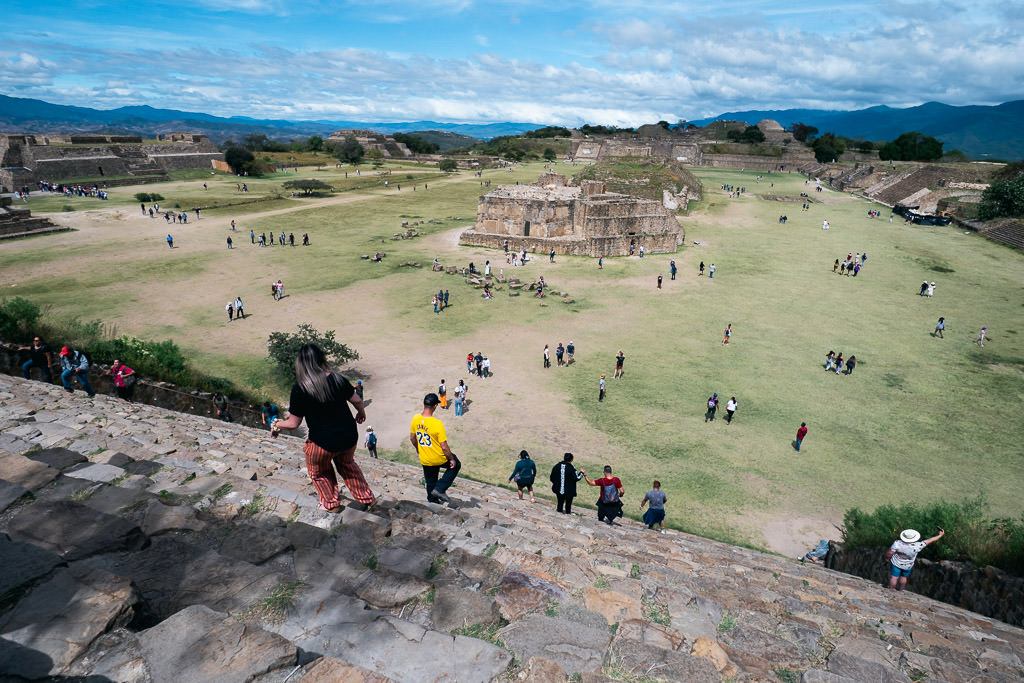
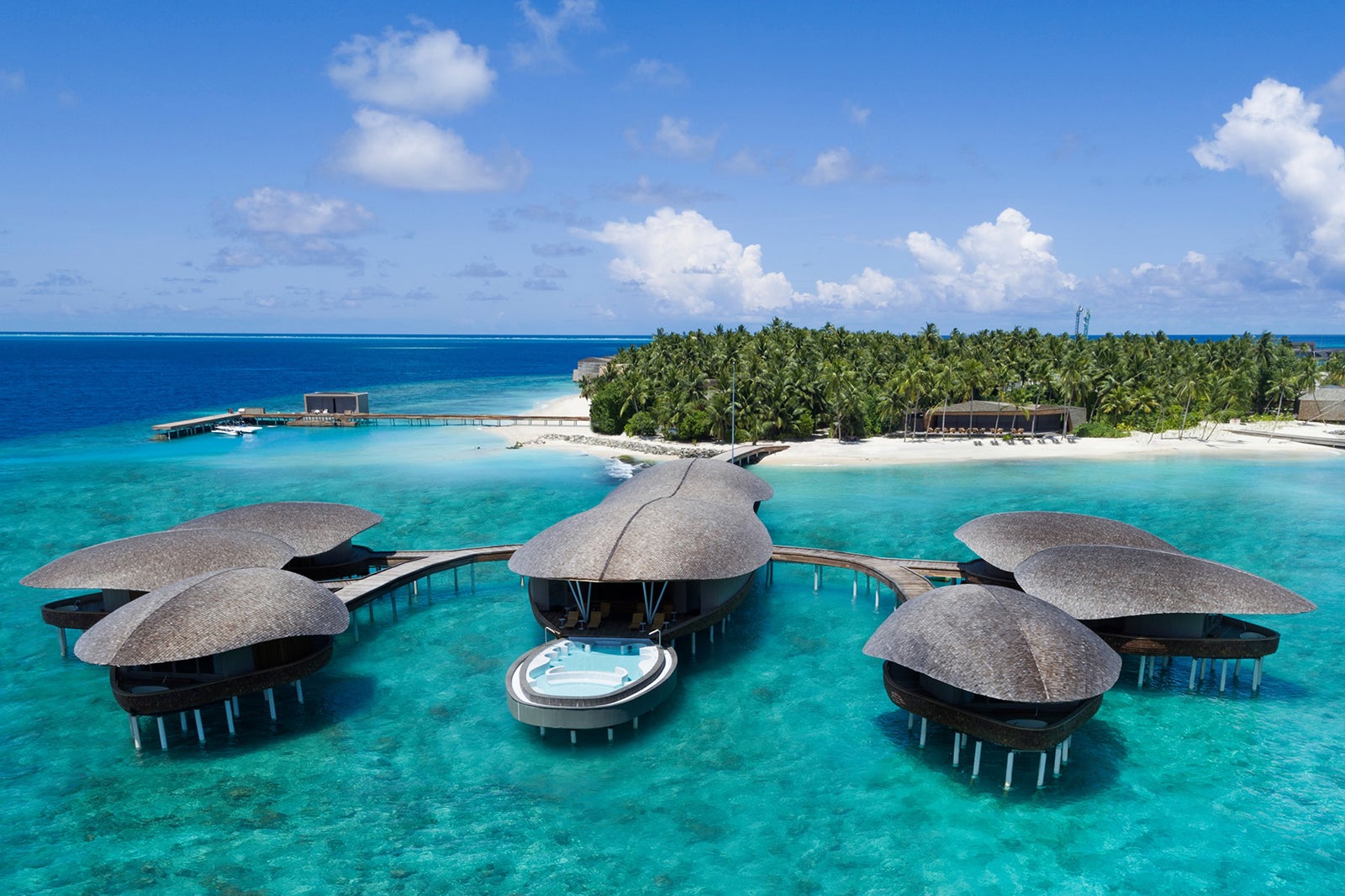

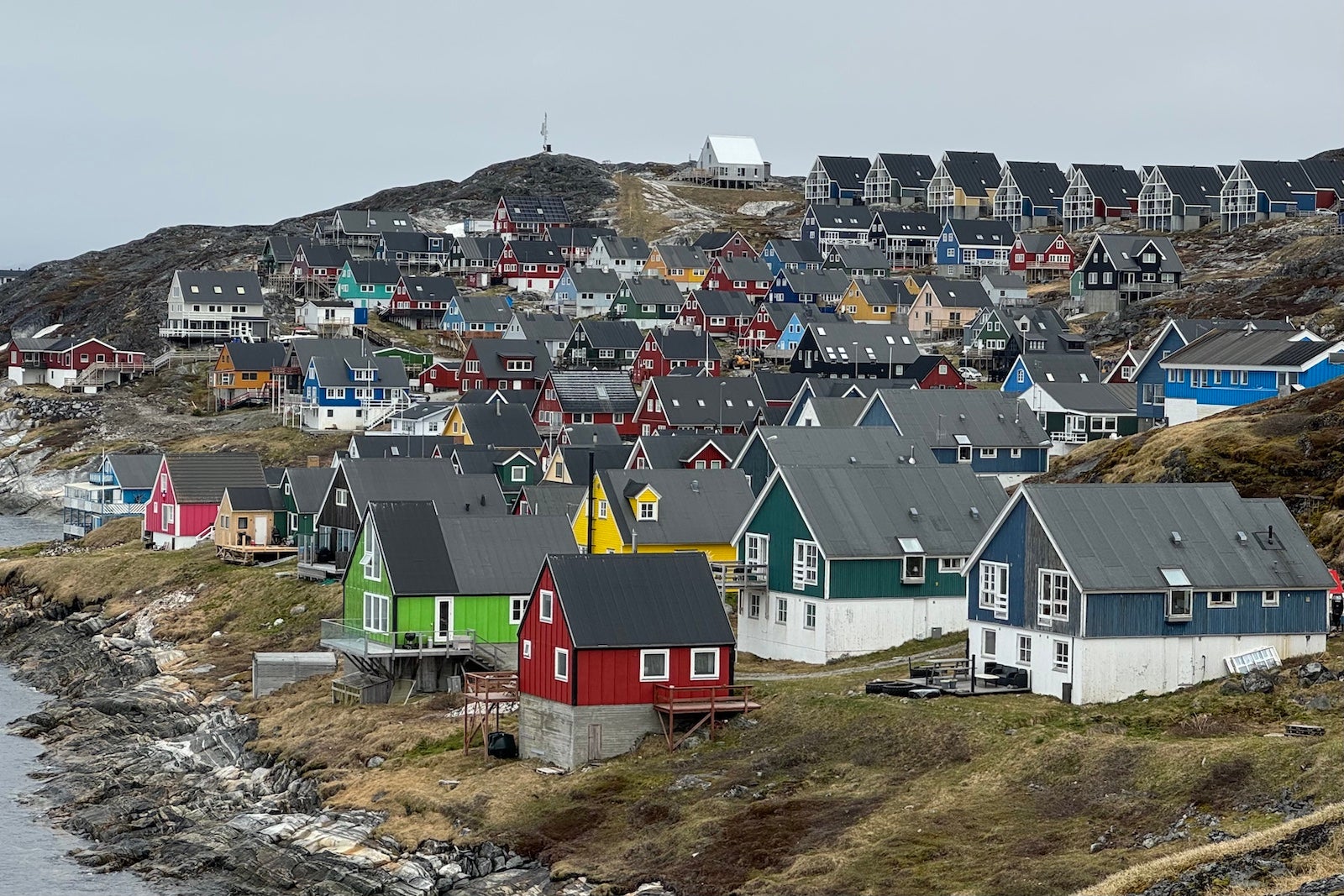





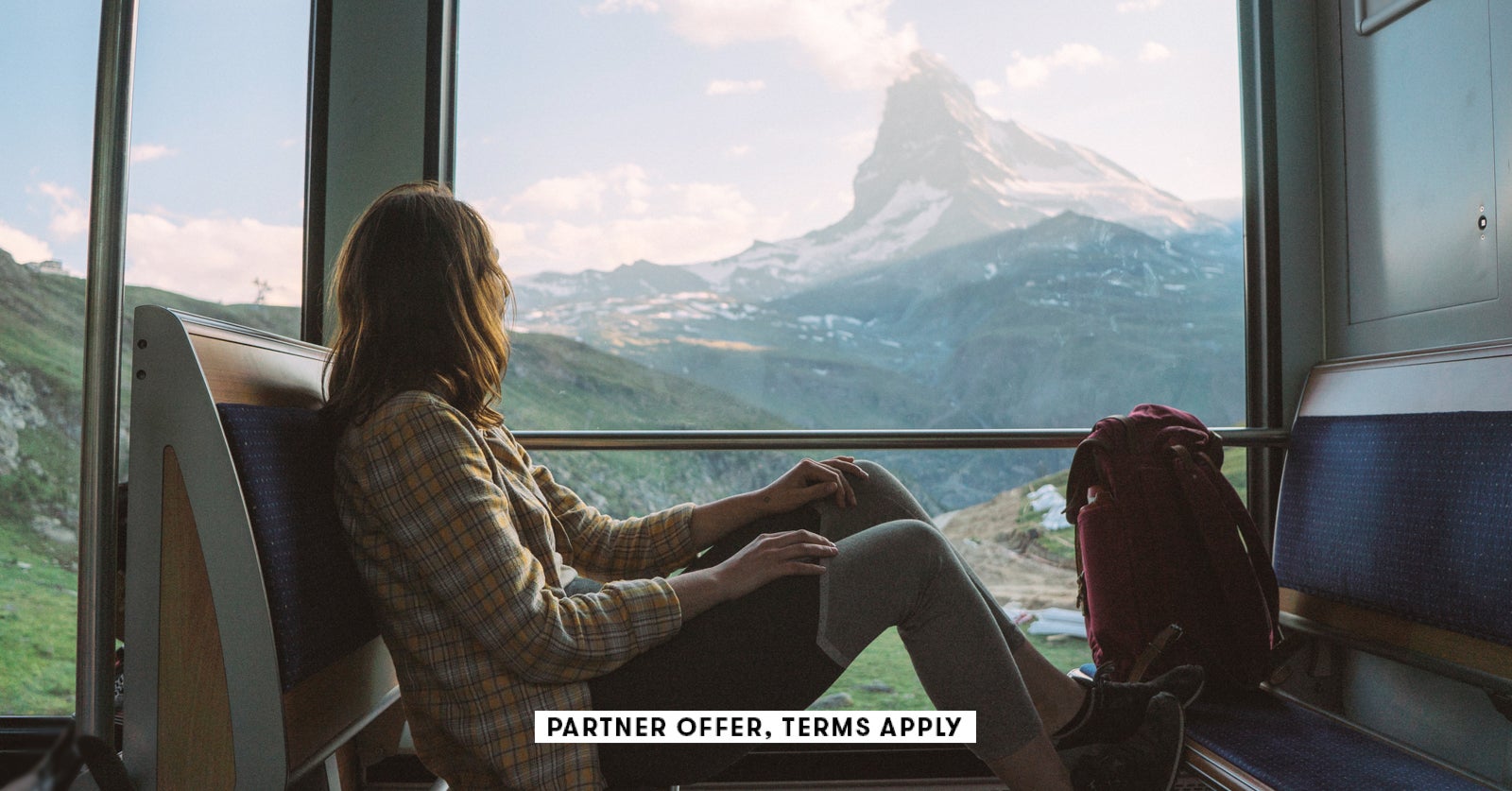
 English (US) ·
English (US) ·